In the annals of investment history, few names resonate with the same reverence as Sir John Templeton. Born in 1912 in the small town of Winchester, Tennessee, Templeton rose from humble beginnings to become one of the most successful and respected investors of the 20th century. His innovative approach to investing not only amassed him great wealth but also revolutionized the way investors perceive and engage with global markets. Templeton was a pioneer of global investing, venturing beyond the borders of the United States at a time when such practices were rare and often viewed with skepticism.
source: The Swedish Investor on YouTube
Templeton’s investment philosophy was grounded in the belief that opportunities for wealth creation were not confined to any single country or region. He advocated for a global perspective, emphasizing the importance of diversifying investments across international markets to harness growth potential and mitigate risks inherent in domestic markets. His contrarian approach, characterized by buying undervalued stocks during periods of pessimism and holding them for the long term, set him apart from his contemporaries.
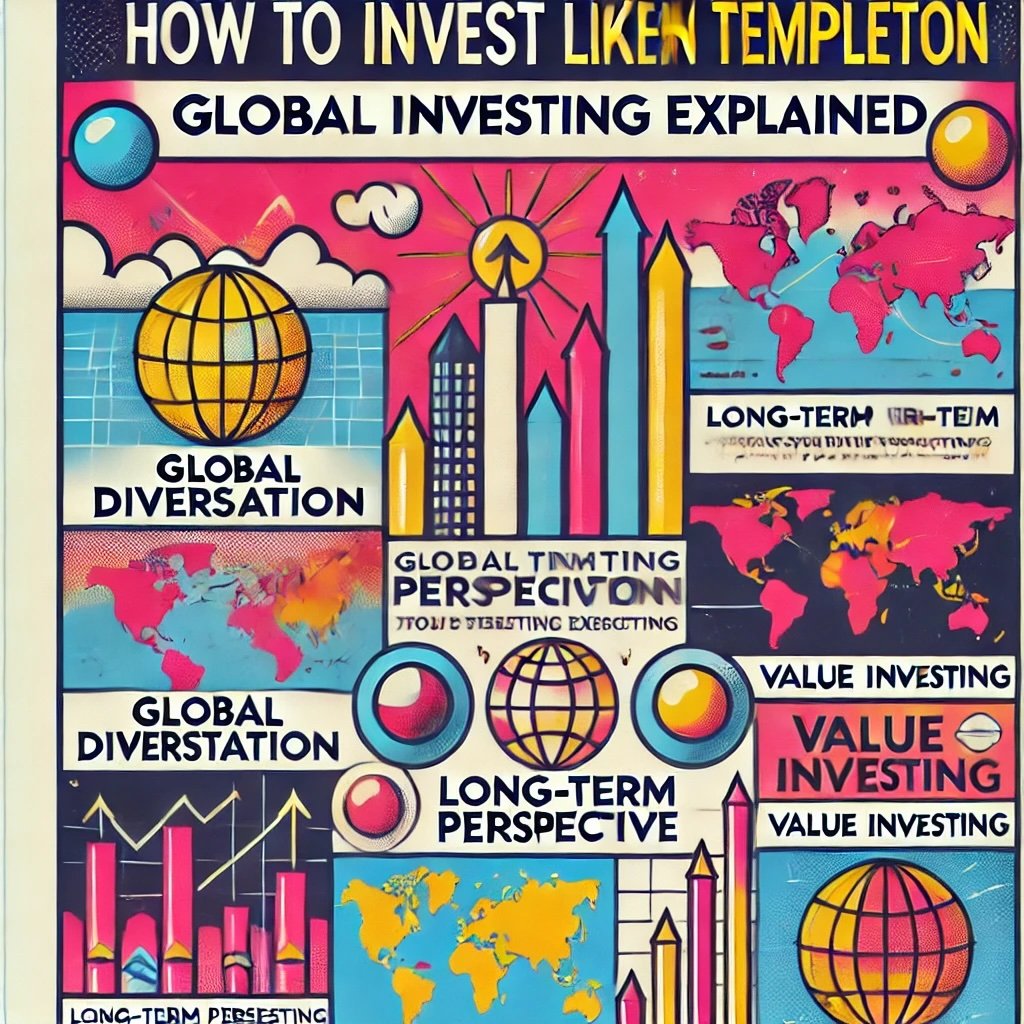
The purpose of this article is to delve deep into John Templeton’s global investment strategies and explore how individual investors can apply his principles to their own portfolios. We will examine the importance of international diversification, the methodologies for identifying opportunities in emerging markets, and the significance of maintaining a long-term perspective. Additionally, we will discuss the practical steps necessary to navigate the complexities of global investing, including managing currency and political risks.
In an increasingly interconnected world, understanding the nuances of global investing is essential for those seeking to enhance their investment returns and achieve long-term financial goals. By embracing Templeton’s strategies, investors can position themselves to capitalize on opportunities that may otherwise remain untapped. Whether you are an experienced investor looking to broaden your horizons or a novice eager to learn from one of the greatest investors of all time, this comprehensive guide aims to provide valuable insights and actionable steps to help you invest like John Templeton.
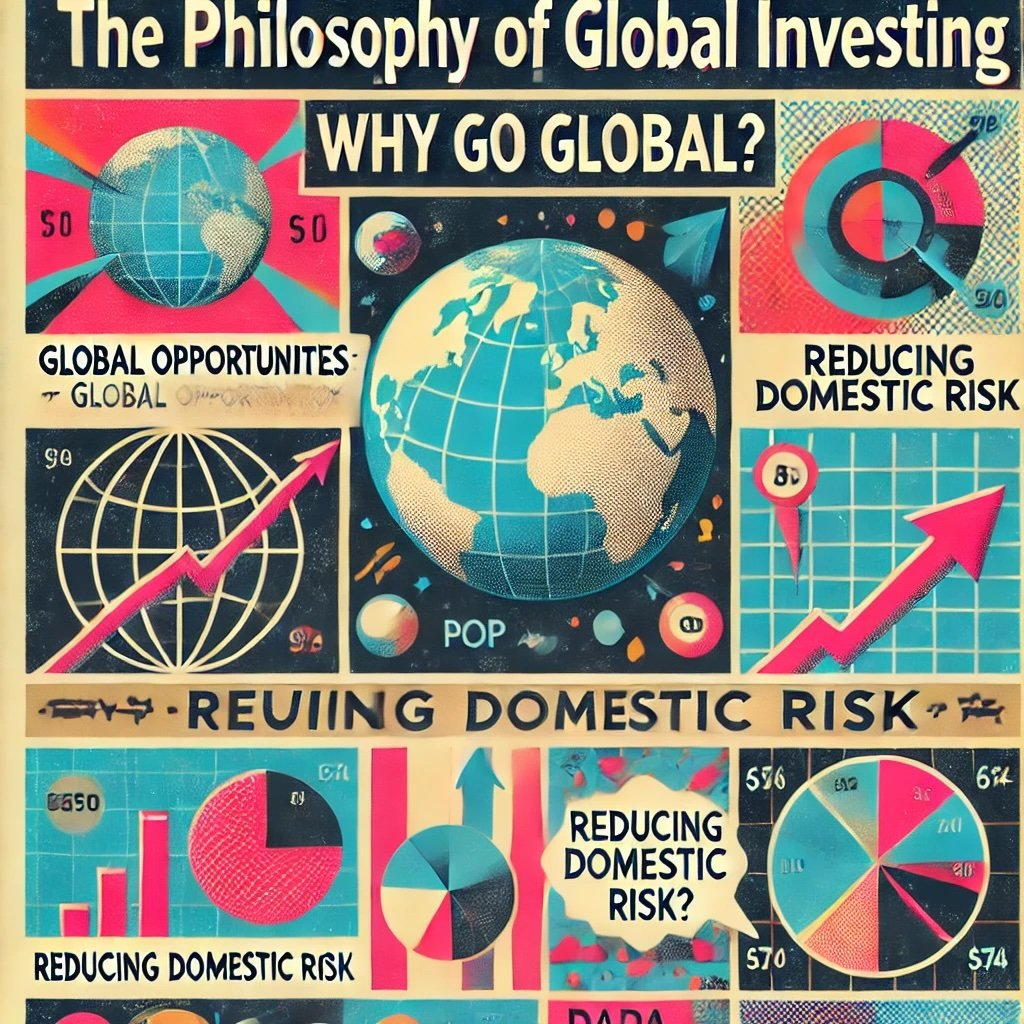
The Philosophy of Global Investing
Why Go Global?
The investment landscape has evolved dramatically over the past few decades, yet John Templeton’s foresight in recognizing the benefits of global investing remains as relevant today as it was in his time. Templeton understood that confining investments to one’s domestic market could limit potential returns and expose investors to unnecessary risks associated with economic downturns or political instability within a single country. By expanding the investment horizon globally, he believed that investors could access a broader array of opportunities and achieve better diversification.
Templeton’s belief in global investing was rooted in several key principles:
- Market Inefficiencies Abroad: He recognized that foreign markets, especially those less developed, often exhibited inefficiencies due to limited analyst coverage and lower levels of investor participation. These inefficiencies presented opportunities to find undervalued stocks that were overlooked by mainstream investors.
- Economic Cycles Differ Across Countries: Templeton observed that economies around the world do not move in lockstep. While one country’s economy might be in a recession, another could be experiencing robust growth. Investing globally allows investors to benefit from these varying economic cycles.
- Diversification Benefits: By spreading investments across different countries and regions, investors can reduce their exposure to country-specific risks. This diversification can lead to a more stable portfolio performance over time.
- Access to Emerging Markets: Templeton was one of the first to recognize the potential of emerging markets, which offered higher growth prospects compared to developed economies. These markets provided opportunities for significant capital appreciation.
Example of Templeton’s Global Investment Success:
In the aftermath of World War II, while many investors were hesitant to invest outside the United States due to geopolitical uncertainties, Templeton saw immense potential in Japan’s war-torn economy. He invested heavily in Japanese stocks during the 1950s when the country’s economy was rebuilding from the devastation of the war. At that time, Japanese companies were trading at extremely low valuations, and the general sentiment was pessimistic.
Templeton’s contrarian bet paid off handsomely as Japan entered a period of rapid economic growth known as the “Japanese Economic Miracle.” The country’s GDP grew exponentially, and the stock market soared. His investments in Japan yielded extraordinary returns, solidifying his reputation as a visionary global investor and demonstrating the benefits of looking beyond one’s domestic market.
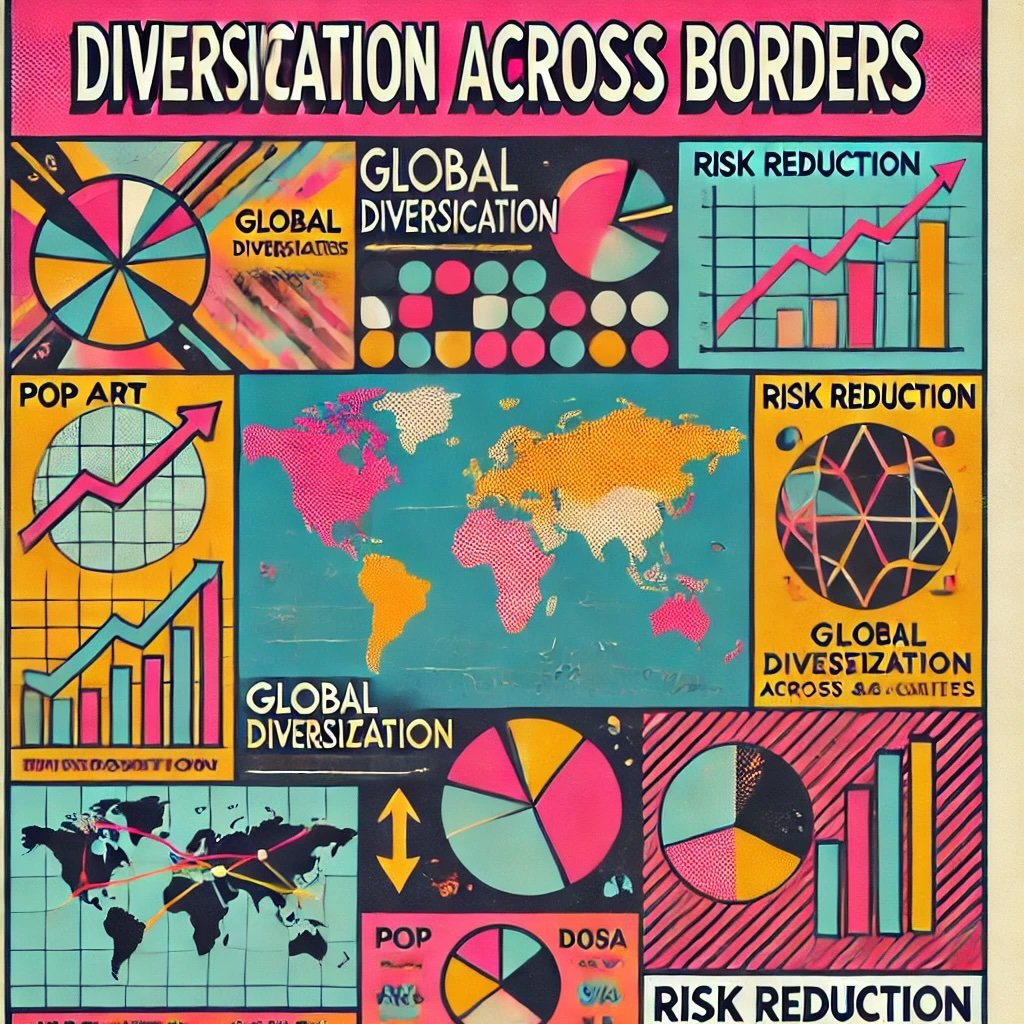
Diversification Across Borders
Diversification is a fundamental tenet of sound investing, aimed at reducing risk by allocating investments across various assets. Templeton extended this principle by emphasizing the importance of diversifying not just across different asset classes but also across geographical borders.
Benefits of Global Diversification:
- Reduction of Systematic Risk: By investing in multiple countries, an investor can mitigate the impact of country-specific economic downturns, political upheaval, or regulatory changes. For instance, a recession in one country may not affect investments in another country that is experiencing economic growth.
- Access to Unique Opportunities: Different countries have varying strengths in certain industries. For example, technology innovation may be concentrated in the United States, while natural resources might be abundant in Australia or Canada. Global diversification allows investors to capitalize on these unique opportunities.
- Currency Diversification: Holding investments in different currencies can act as a hedge against currency depreciation in the investor’s home country. Currency appreciation in foreign investments can enhance overall portfolio returns.
- Exposure to Emerging Markets: Emerging markets often have higher growth rates compared to developed economies. Diversifying into these markets can boost potential returns but also requires careful risk assessment.
Templeton’s Approach to Diversification:
Templeton was meticulous in his diversification strategy, ensuring that his investments were spread across various countries, industries, and asset types. He believed that no single investment should dominate a portfolio, and he often held a large number of stocks to achieve broad exposure.
Key Aspects of His Diversification Strategy:
- Avoiding Home Bias: Templeton discouraged the tendency of investors to favor domestic stocks, known as “home bias.” He argued that limiting investments to one’s home country could result in missed opportunities and higher risk.
- Industry Diversification: He invested across multiple sectors, such as technology, consumer goods, energy, and finance, to reduce industry-specific risks.
- Asset Class Diversification: While primarily focused on equities, Templeton also recognized the value of including bonds, real estate, and other asset classes in a well-rounded portfolio.
Impact of Diversification on Portfolio Performance:
By diversifying globally, Templeton’s portfolios were better positioned to withstand market volatility and economic downturns in any single country or region. This approach contributed to more consistent and resilient portfolio performance over the long term, demonstrating the effectiveness of global diversification as a risk management tool.
Key Takeaways
- Global investing expands the universe of investment opportunities, allowing investors to find undervalued assets and high-growth prospects that may not be available domestically.
- Diversification across borders reduces portfolio risk by mitigating the impact of country-specific economic and political events.
- John Templeton’s success in global investing highlights the importance of adopting a global perspective and being willing to invest where others are not.
- Investors should consider their own risk tolerance, investment objectives, and the potential benefits of global diversification when constructing their portfolios.
By understanding and embracing the philosophy of global investing as championed by John Templeton, investors can enhance their potential for long-term growth and reduce the risks associated with concentrated investments.

Identifying Opportunities in Emerging Markets
Emerging Market Potential
Emerging markets are countries experiencing rapid economic growth and industrialization, moving towards becoming developed economies. These markets often exhibit higher volatility but also offer the potential for substantial returns due to their growth trajectories. John Templeton was a visionary in recognizing the untapped potential in emerging markets long before they gained mainstream attention.
Why Templeton Focused on Emerging Markets:
- Higher Growth Rates: Emerging economies typically have higher GDP growth rates compared to developed countries. This growth can translate into significant appreciation in the value of companies operating within these markets.
- Undervalued Assets: Due to lower levels of investor participation and analyst coverage, stocks in emerging markets may be undervalued, presenting opportunities for astute investors.
- Demographic Advantages: Many emerging markets have young, growing populations, leading to increased consumer spending and a burgeoning labor force.
- Market Liberalization: As emerging economies open up their markets to foreign investment and privatize state-owned enterprises, new investment opportunities arise.
Challenges in Emerging Markets:
While the potential rewards are significant, investing in emerging markets comes with unique risks, including political instability, less stringent regulatory frameworks, and currency fluctuations. Templeton was well aware of these risks and employed rigorous analysis to mitigate them.
Economic Indicators Used by Templeton
To identify promising emerging markets, Templeton relied on a set of key economic indicators that provided insights into the health and potential of a country’s economy.
Key Economic Indicators:
- Gross Domestic Product (GDP) Growth:
- Significance: GDP growth indicates the overall economic health of a country. High and consistent GDP growth suggests a robust economy with expanding business opportunities.
- Templeton’s Approach: He looked for countries with sustained GDP growth over several years, indicating a stable and growing economy.
- Inflation Rates:
- Significance: Low and stable inflation is crucial for maintaining the purchasing power of consumers and the profitability of businesses.
- Templeton’s Approach: Preferred countries where inflation was under control, as high inflation can erode investment returns and destabilize economies.
- Political Stability and Governance:
- Significance: A stable political environment is essential for economic growth and investor confidence. Good governance reduces the risk of abrupt policy changes that could negatively affect investments.
- Templeton’s Approach: Assessed the political climate, looking for governments committed to economic reforms, transparency, and the rule of law.
- Current Account Balance:
- Significance: A country’s current account balance reflects its trade balance and investment income. A surplus indicates that the country is a net lender to the rest of the world, which is generally positive.
- Templeton’s Approach: Monitored current account balances to gauge the sustainability of economic growth and potential currency strength.
- Foreign Exchange Reserves:
- Significance: High levels of foreign exchange reserves provide a buffer against external shocks and currency crises.
- Templeton’s Approach: Favored countries with substantial reserves, as this indicated financial resilience.
- Regulatory Environment and Ease of Doing Business:
- Significance: A business-friendly regulatory environment encourages investment and entrepreneurship.
- Templeton’s Approach: Looked for countries implementing reforms to improve the ease of doing business, reduce corruption, and protect investor rights.
In-Depth Analysis:
Templeton didn’t rely solely on quantitative indicators. He also conducted qualitative assessments, such as:
- Cultural Factors: Understanding cultural attitudes towards entrepreneurship and innovation.
- Infrastructure Development: Evaluating the quality of physical infrastructure, which is critical for business operations.
- Education and Human Capital: Assessing the education level and skills of the workforce, which impact productivity and innovation.
Case Study: Templeton’s Investment in South Korea
Background:
In the late 1980s and early 1990s, South Korea was transitioning from a war-torn nation to a rapidly industrializing economy. Despite its progress, it was still considered an emerging market, with many investors wary of its political tensions with North Korea and economic uncertainties.
Templeton’s Investment Thesis:
- Strong Economic Growth:
- Observation: South Korea was experiencing impressive GDP growth, driven by its export-oriented economy and focus on manufacturing and technology.
- Undervalued Companies:
- Observation: Many South Korean companies were trading at low price-to-earnings ratios compared to their global counterparts, indicating potential undervaluation.
- Government Reforms:
- Observation: The South Korean government was implementing economic reforms, liberalizing markets, and encouraging foreign investment.
- Skilled Workforce and Innovation:
- Observation: A highly educated workforce and a cultural emphasis on education and hard work contributed to increased productivity and innovation.
Investment Actions:
- Selective Stock Picking: Templeton invested in companies that were market leaders in industries such as electronics, automotive, and shipbuilding.
- Long-Term Commitment: Recognized that the full potential of these investments would be realized over several years, and was prepared to hold the positions long-term.
- Risk Assessment: Evaluated geopolitical risks, particularly tensions with North Korea, and determined that the potential rewards outweighed the risks.
Outcome:
- Significant Returns: As South Korea’s economy continued to grow and its companies became global competitors, the value of Templeton’s investments increased substantially.
- Validation of Strategy: This successful investment reinforced Templeton’s belief in the importance of thorough analysis and the potential of emerging markets.
Key Takeaways
- Emerging markets offer unique opportunities for substantial growth due to higher economic growth rates and undervalued assets.
- Thorough analysis of both quantitative and qualitative factors is essential when evaluating emerging markets to identify risks and opportunities.
- John Templeton’s success in South Korea demonstrates the importance of recognizing long-term trends and being willing to invest in markets before they gain widespread acceptance.
- Investors should be mindful of the additional risks associated with emerging markets, including political instability and currency volatility, and take steps to mitigate these risks.
By carefully selecting emerging markets based on comprehensive analysis, investors can potentially achieve higher returns and diversify their portfolios beyond developed markets.

The Importance of a Long-Term Perspective
Patience and Discipline
John Templeton was a staunch advocate of long-term investing, emphasizing that patience and discipline are critical components of successful investment strategies. He believed that the true value of an investment often takes time to materialize, and that short-term market fluctuations should not deter investors from their long-term goals.
Templeton’s Views on Long-Term Investing:
- Compounding Returns:
- Concept: The power of compounding allows investment returns to generate additional earnings over time, exponentially increasing wealth.
- Application: By holding investments for the long term, Templeton allowed the effects of compounding to significantly enhance his portfolio’s growth.
- Avoiding Emotional Decisions:
- Concept: Short-term market volatility can trigger emotional responses, leading to impulsive decisions like panic selling during market downturns.
- Application: Templeton maintained discipline by sticking to his investment thesis, even when markets were turbulent.
- Focus on Fundamentals:
- Concept: Over time, the market tends to reflect the underlying fundamentals of companies.
- Application: He invested in companies with strong fundamentals, confident that their value would be recognized in the long run.
- Ignoring Market Timing:
- Concept: Attempting to time the market is often counterproductive and can lead to missed opportunities.
- Application: Templeton emphasized staying invested rather than trying to predict short-term market movements.
Avoiding Short-Term Noise
Short-term noise refers to market fluctuations and events that can distract investors from their long-term objectives. Templeton believed that giving undue attention to daily market movements and sensational news headlines could derail an investor’s strategy.
Strategies to Avoid Short-Term Noise:
- Limit Exposure to Daily News:
- Rationale: Constant monitoring of financial news can create anxiety and prompt hasty decisions.
- Action: Focus on periodic reviews of investments rather than daily tracking.
- Set Clear Investment Goals:
- Rationale: Having well-defined objectives helps maintain focus during market volatility.
- Action: Establish long-term financial goals and create an investment plan aligned with these goals.
- Regular Portfolio Rebalancing:
- Rationale: Adjusting the portfolio periodically ensures alignment with risk tolerance and investment objectives.
- Action: Rebalance the portfolio at set intervals or when asset allocations deviate significantly from targets.
- Rely on Fundamental Analysis:
- Rationale: Evaluating the intrinsic value of investments helps maintain confidence during market fluctuations.
- Action: Continuously assess the fundamental performance of investments rather than their short-term price movements.
Example: Templeton’s Approach During Market Uncertainty
Case Study: Investing During the 1973-1974 Market Downturn
Background:
In the early 1970s, the global economy faced significant challenges, including the OPEC oil embargo, high inflation, and economic recession. The stock markets experienced steep declines, with investor sentiment turning overwhelmingly negative.
Templeton’s Actions:
- Contrarian Investing:
- Observation: Recognized that widespread pessimism had driven stock prices below their intrinsic values.
- Action: Aggressively purchased stocks that were undervalued due to market fear.
- Diversification:
- Observation: Economic conditions varied across countries.
- Action: Continued to invest globally, identifying opportunities in markets less affected by the downturn.
- Long-Term Commitment:
- Observation: Believed that economic conditions would eventually improve.
- Action: Held onto investments, confident in their long-term potential.
Outcome:
- Substantial Gains: As the economy recovered and markets rebounded, the value of his investments increased significantly.
- Reinforced Strategy: The success during this period validated Templeton’s approach of buying during times of maximum pessimism and maintaining a long-term perspective.
Key Takeaways
- A long-term perspective is essential for realizing the full potential of investments, as it allows for the effects of compounding and the alignment of market prices with intrinsic values.
- Ignoring short-term noise helps investors stay focused on their investment strategy and avoid making decisions based on emotions or temporary market conditions.
- John Templeton’s success during periods of market uncertainty demonstrates the importance of patience and discipline in achieving long-term investment goals.
- Investors should develop a clear investment plan, remain committed to their objectives, and resist the temptation to react to short-term market fluctuations.
By adopting a long-term mindset and maintaining discipline, investors can navigate market volatility and position themselves for sustained success.

Value Investing on a Global Scale
Finding Undervalued Stocks Worldwide
Value investing is an investment strategy that involves selecting stocks that appear to be trading for less than their intrinsic or book value. John Templeton was a master of applying value investing principles on a global scale, seeking undervalued stocks in markets around the world.
Templeton’s Approach to Global Value Investing:
- Comprehensive Global Search:
- Methodology: He conducted extensive research across multiple countries to identify undervalued stocks, rather than limiting his search to domestic markets.
- Contrarian Mindset:
- Philosophy: Templeton often invested in markets or sectors that were out of favor, believing that negative sentiment could lead to undervalued assets.
- Fundamental Analysis:
- Technique: Emphasized thorough analysis of a company’s financial statements, management quality, competitive position, and industry trends.
- Long-Term Investment Horizon:
- Strategy: Held investments for extended periods to allow time for the market to recognize the true value of the stocks.
Global Stock Screening Criteria
To systematically identify undervalued stocks globally, Templeton employed specific financial criteria and screening methods.
Key Screening Criteria:
- Low Price-to-Earnings (P/E) Ratio:
- Explanation: A low P/E ratio may indicate that a stock is undervalued relative to its earnings.
- Application: Compared P/E ratios of companies within the same industry across different countries to find those trading at a discount.
- Low Price-to-Book (P/B) Ratio:
- Explanation: A low P/B ratio suggests that a stock may be undervalued relative to its net assets.
- Application: Searched for companies with strong asset bases that were trading below their book value.
- High Dividend Yield:
- Explanation: A high dividend yield can provide income and signal financial stability.
- Application: Preferred companies with consistent dividend payments, indicating a commitment to returning value to shareholders.
- Strong Balance Sheet:
- Explanation: Companies with low debt levels and healthy cash reserves are better equipped to weather economic downturns.
- Application: Assessed liquidity ratios, debt-to-equity ratios, and cash flow statements to evaluate financial health.
- Earnings Growth Potential:
- Explanation: Companies with prospects for earnings growth are more likely to increase in value over time.
- Application: Analyzed industry trends, competitive advantages, and management strategies to estimate future earnings.
- Management Quality:
- Explanation: Competent and ethical management is crucial for a company’s success.
- Application: Evaluated the track record and reputation of company executives.
- Market Sentiment:
- Explanation: Negative market sentiment can depress stock prices below intrinsic value.
- Application: Identified companies that were undervalued due to temporary setbacks or unfounded pessimism.
Use of Technology and Data:
- Screening Tools: Utilized financial databases and screening tools to filter stocks based on the above criteria.
- Comparative Analysis: Conducted comparative analysis across industries and countries to identify the best opportunities.
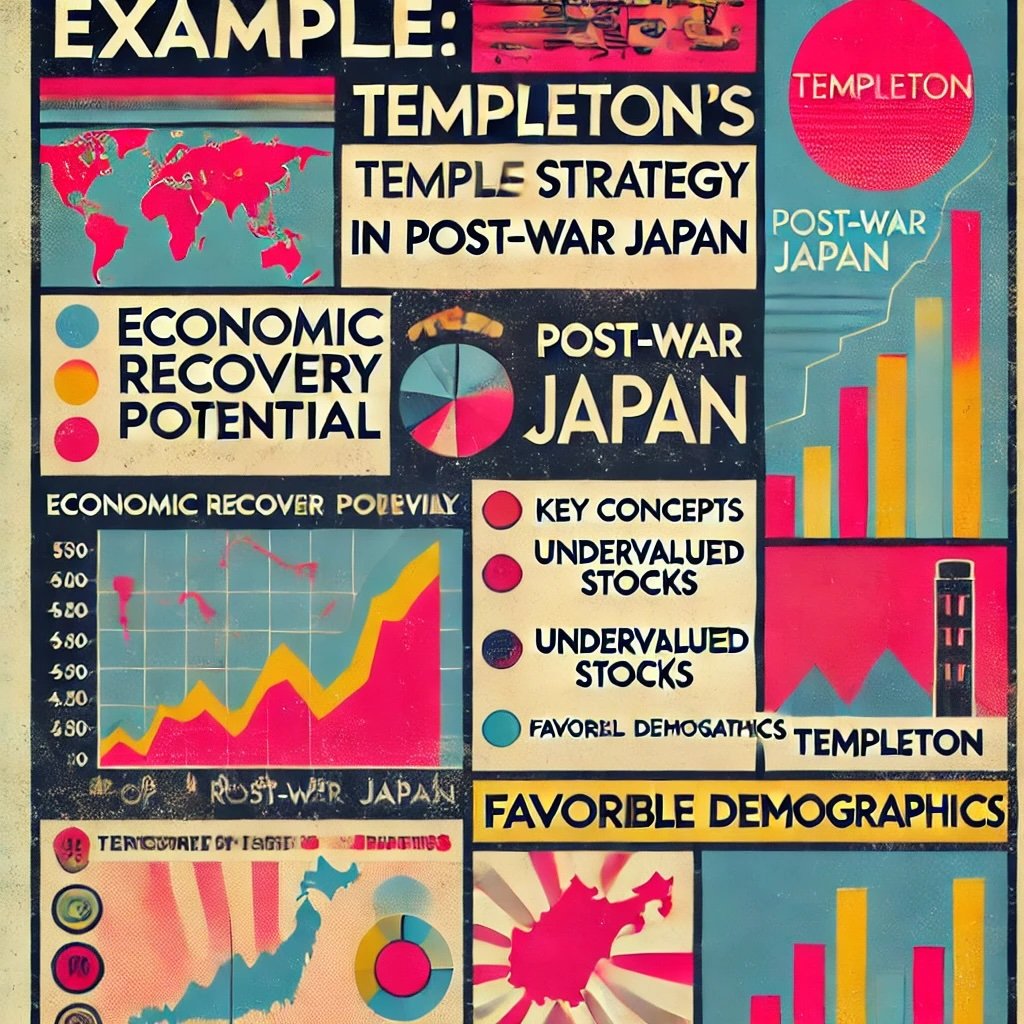
Example: Templeton’s Strategy in Post-War Japan
Background:
After World War II, Japan’s economy was in ruins, with its infrastructure destroyed and its industries crippled. The Japanese stock market was severely depressed, and investor sentiment was extremely negative.
Templeton’s Investment Thesis:
- Economic Recovery Potential:
- Observation: Believed that Japan had the potential for rapid economic recovery and industrial growth due to its workforce and government support.
- Undervalued Stocks:
- Observation: Many Japanese companies were trading at a fraction of their book value, presenting significant value opportunities.
- Favorable Demographics and Cultural Factors:
- Observation: Recognized the dedication and hard work ethic of the Japanese people, which would contribute to economic rebuilding.
Investment Actions:
- Selective Stock Purchasing: Bought shares in companies with strong fundamentals, even if they were currently struggling.
- Diversification Within Japan: Invested across various sectors, including manufacturing, technology, and consumer goods.
- Long-Term Commitment: Held these investments over the long term to allow for economic recovery and growth.
Outcome:
- Exceptional Returns: As Japan entered its period of rapid economic expansion in the 1950s and 1960s, known as the “Japanese Economic Miracle,” the value of Templeton’s investments increased dramatically.
- Strategic Validation: This success reinforced Templeton’s belief in global value investing and the importance of a long-term perspective.
Key Takeaways
- Value investing principles are effective on a global scale, allowing investors to find undervalued stocks in various markets.
- Systematic screening using specific financial criteria helps identify investment opportunities that may be overlooked by others.
- Patience and a willingness to invest in markets that others avoid can lead to significant gains, as evidenced by Templeton’s investments in post-war Japan.
- Investors should conduct thorough fundamental analysis and consider both quantitative and qualitative factors when selecting stocks.
By adopting Templeton’s approach to value investing globally, investors can uncover hidden gems in international markets and enhance their portfolio’s performance.
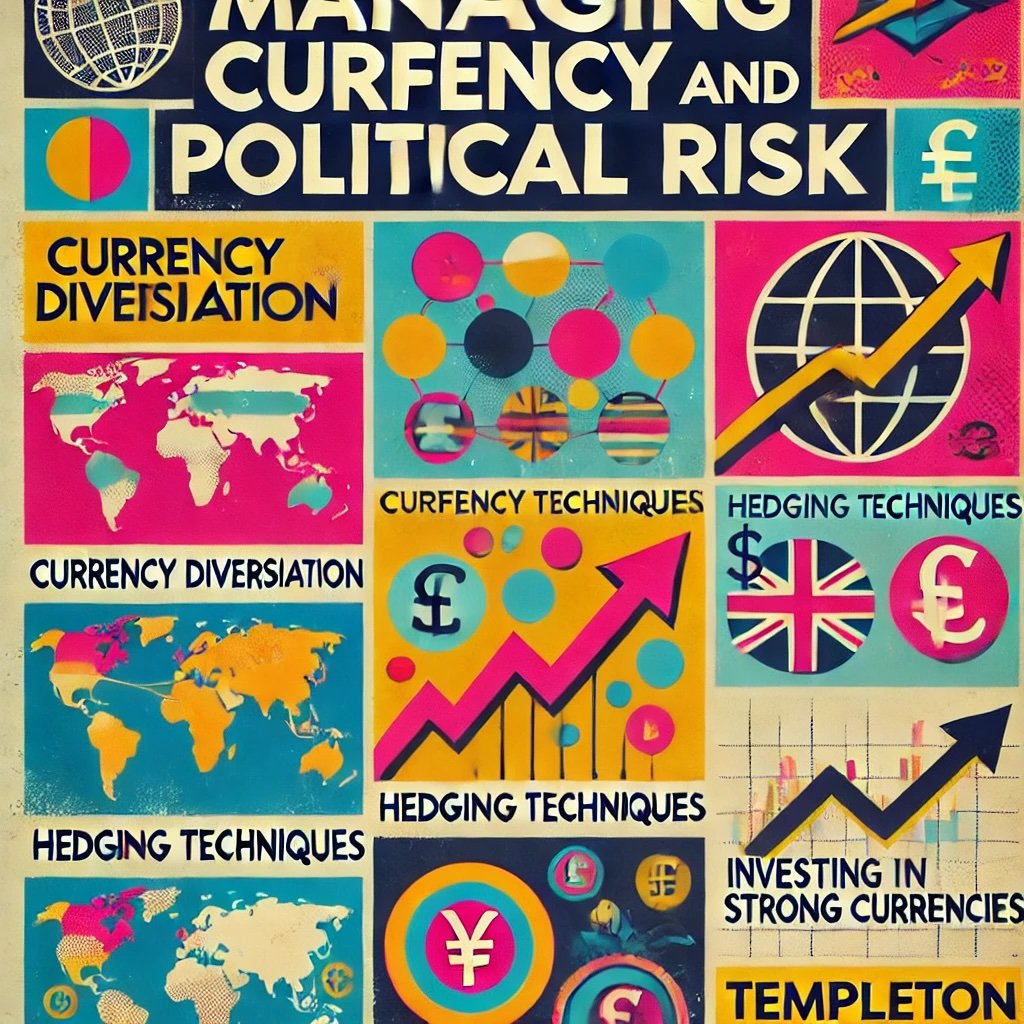
Managing Currency and Political Risk
Currency Considerations
When investing internationally, currency risk becomes a significant factor that can affect the overall return of an investment. Currency fluctuations can either enhance or diminish investment returns when converting foreign investments back to the investor’s home currency.
Templeton’s Strategies for Managing Currency Risk:
- Currency Diversification:
- Approach: Invested in a variety of currencies to spread risk.
- Benefit: Reduces the impact of adverse movements in any single currency on the overall portfolio.
- Investing in Strong or Appreciating Currencies:
- Approach: Preferred investing in countries with strong economic fundamentals that could lead to currency appreciation.
- Benefit: Currency gains can enhance investment returns when converted back to the home currency.
- Hedging Techniques:
- Approach: Used financial instruments such as currency forwards, futures, and options to hedge against unfavorable currency movements.
- Benefit: Protects against currency depreciation that could erode investment gains.
- Assessing Currency Trends:
- Approach: Analyzed macroeconomic indicators like interest rates, inflation, and trade balances to predict currency movements.
- Benefit: Informed decisions on when to invest or hedge based on expected currency performance.
Example:
- Investing in the Swiss Franc: Templeton often invested in Swiss assets, recognizing the Swiss franc’s reputation as a stable and strong currency, which added an extra layer of security to his investments.
Political and Economic Stability
Political risk refers to the potential for losses due to changes or instability in a country’s government or regulatory environment. Economic stability is equally important, as it affects a country’s ability to sustain growth and provide a conducive environment for businesses.
Factors Considered by Templeton:
- Government Stability:
- Considerations: Frequency of government changes, civil unrest, and the likelihood of drastic policy shifts.
- Regulatory Environment:
- Considerations: Transparency, consistency of regulations, property rights protection, and openness to foreign investment.
- Corruption Levels:
- Considerations: High levels of corruption can undermine economic development and pose risks to investors.
- Geopolitical Risks:
- Considerations: Tensions with neighboring countries, participation in international conflicts, and trade relations.
Templeton’s Approach to Managing Political Risk:
- Diversification Across Countries:
- Strategy: Invested in multiple countries to avoid overexposure to the political risks of any single nation.
- In-Depth Research:
- Strategy: Conducted thorough due diligence on the political climate, legal system, and economic policies of target countries.
- Engaging Local Experts:
- Strategy: Leveraged insights from local analysts, economists, and legal advisors who had a deeper understanding of the domestic landscape.
- Monitoring Developments:
- Strategy: Kept abreast of political events and policy changes that could impact investments.
Case Study:
- Investing in China: Templeton recognized the potential of China’s vast market but was cautious due to political risks associated with its communist government and regulatory uncertainties. He carefully selected investments and monitored the political environment to mitigate risks.
Risk Mitigation Strategies
Templeton employed several strategies to manage the combined risks of currency fluctuations and political instability inherent in global investing.
Key Strategies:
- Portfolio Diversification:
- Implementation: Spread investments across various countries, currencies, industries, and asset classes.
- Benefit: Reduces the impact of adverse events in any single area.
- Hedging Instruments:
- Implementation: Utilized derivatives and other financial instruments to hedge against currency and market risks.
- Benefit: Provides protection against losses due to unfavorable movements.
- Investment in Multinational Corporations:
- Implementation: Invested in companies with global operations that could offset risks in one region with gains in another.
- Benefit: Such companies often have the resources and strategies to navigate political and economic challenges.
- Focus on Stable Economies:
- Implementation: Allocated a portion of the portfolio to investments in stable, developed economies as a counterbalance to riskier emerging markets.
- Benefit: Provides a foundation of stability within the portfolio.
- Regular Portfolio Review and Adjustment:
- Implementation: Continuously monitored investments and made adjustments in response to changing conditions.
- Benefit: Allows for proactive management of risks and seizing new opportunities.
Example:
- Exiting Positions Due to Increased Risk: If political instability increased in a country where Templeton had investments, he would consider reducing or exiting his positions to protect his portfolio.
Key Takeaways
- Currency and political risks are inherent in global investing but can be effectively managed through careful planning and strategy.
- Diversification, both geographically and across asset classes, is a fundamental tool for risk mitigation.
- Using hedging techniques and staying informed about global economic and political developments are essential components of managing international investments.
- Investors should conduct thorough due diligence and consider engaging local expertise when investing in foreign markets.
By employing these risk management strategies, investors can navigate the complexities of global investing and enhance the potential for achieving their investment objectives.

Contrarian Investing: Going Where Others Aren’t
Contrarian Approach
Contrarian investing involves making investment decisions that go against prevailing market trends or sentiment. John Templeton was a master contrarian investor, often buying assets that were out of favor with the majority of investors.
Principles of Contrarian Investing as Practiced by Templeton:
- Market Overreactions Create Opportunities:
- Belief: Markets can overreact to news, causing stock prices to become significantly undervalued or overvalued.
- Action: Identified and capitalized on these mispricings by buying undervalued assets and selling overvalued ones.
- Psychology of Investing:
- Observation: Investor emotions, such as fear and greed, can drive market cycles and lead to irrational decisions.
- Action: Maintained emotional discipline and made decisions based on fundamental analysis rather than market sentiment.
- Value in Unpopular Investments:
- Belief: Unpopular or neglected sectors may offer better value due to a lack of competition from other investors.
- Action: Sought opportunities in areas that others avoided, provided they met his investment criteria.
- Long-Term Perspective:
- Belief: The true value of an investment will be recognized over time, even if it’s currently overlooked by the market.
- Action: Was willing to hold investments for extended periods until their value was realized.
Buying During Times of Maximum Pessimism
Templeton famously stated, “The time of maximum pessimism is the best time to buy, and the time of maximum optimism is the best time to sell.” He believed that the best investment opportunities arise when market sentiment is at its lowest.
Strategies for Buying During Maximum Pessimism:
- Identifying Overlooked Assets:
- Approach: Looked for quality companies that were undervalued due to temporary issues or negative market sentiment.
- Assessing Intrinsic Value:
- Approach: Conducted thorough fundamental analysis to determine the true worth of an asset, independent of its current market price.
- Emotional Discipline:
- Approach: Avoided being swayed by market emotions, maintaining confidence in his analysis and investment thesis.
- Gradual Accumulation:
- Approach: Built positions over time, especially during market downturns, to take advantage of lower prices.
- Risk Management:
- Approach: Diversified investments to manage the higher risks associated with contrarian positions.
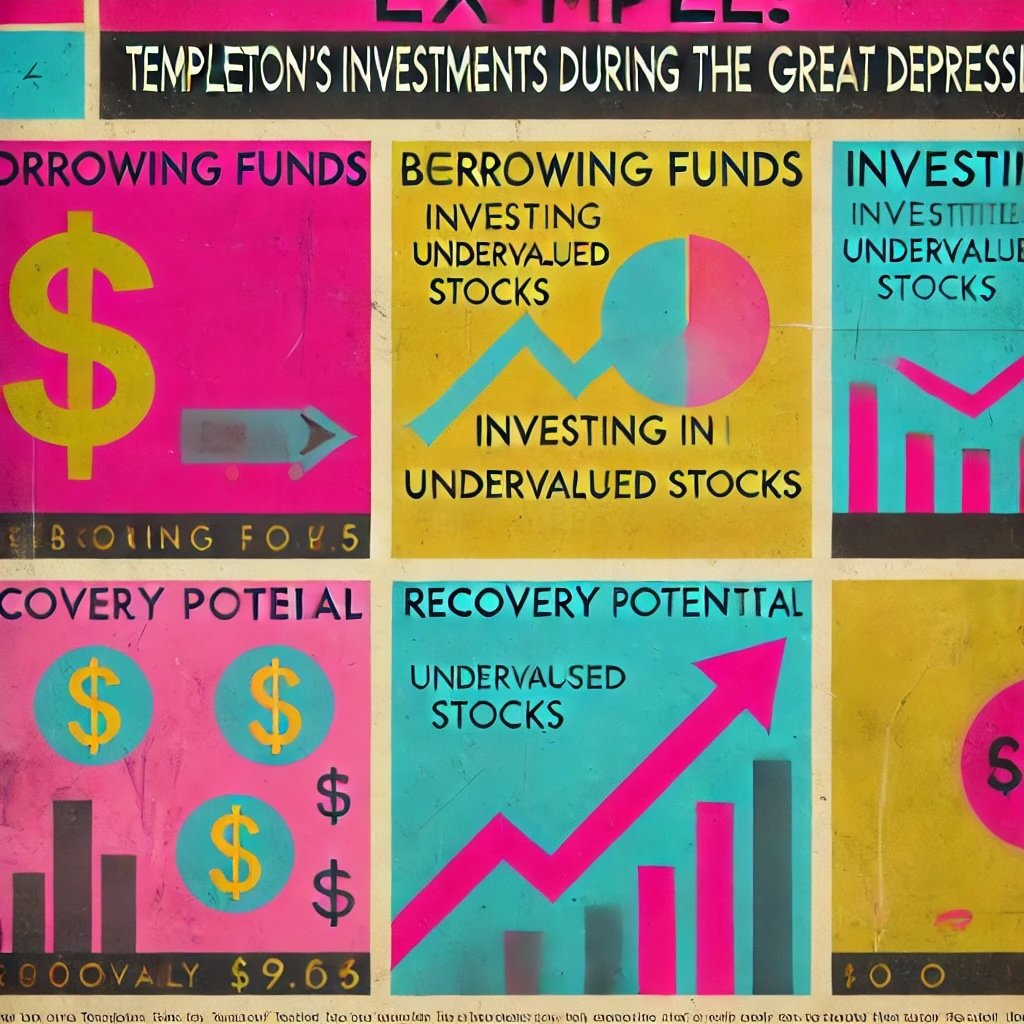
Example: Templeton’s Investments During the Great Depression
Background:
In 1939, the world was on the brink of World War II, and the global economy was still reeling from the Great Depression. Investor sentiment was extremely negative, and stock prices were depressed.
Templeton’s Actions:
- Borrowed Funds to Invest:
- Action: Borrowed $10,000 (equivalent to over $180,000 today) to invest in the stock market.
- Broad Investment in Undervalued Stocks:
- Action: Purchased 100 shares of each company trading below $1 on the New York Stock Exchange, totaling 104 companies.
- Inclusivity of Bankrupt Companies:
- Action: Included 34 companies that were in bankruptcy, believing that even these had the potential for recovery.
Investment Thesis:
- Belief in Recovery: Confident that the economy would eventually recover and that many of these companies would survive and thrive.
- Value Opportunities: Recognized that the extreme pessimism had pushed stock prices below their intrinsic values.
Outcome:
- Substantial Returns: Within four years, the $10,000 investment turned into $40,000, quadrupling in value.
- Validation of Contrarian Approach: Demonstrated that investing during times of maximum pessimism could lead to significant gains.
Lessons Learned:
- Importance of Diversification: Spreading investments across many companies reduced the risk associated with any single firm’s failure.
- Long-Term Commitment: Willingness to hold investments for several years allowed time for the market to recover.
- Emotional Resilience: Maintaining conviction in his strategy despite widespread fear and uncertainty.
Key Takeaways
- Contrarian investing can uncover valuable opportunities that are overlooked or shunned by the majority of investors.
- Buying during times of maximum pessimism requires courage, emotional discipline, and a strong conviction in one’s analysis.
- Diversification is crucial when employing a contrarian strategy to manage the higher risks involved.
- John Templeton’s success as a contrarian investor highlights the potential rewards of going against the crowd and investing based on fundamentals rather than market sentiment.
By considering a contrarian approach when appropriate, investors can potentially enhance their returns and capitalize on market inefficiencies.
Practical Steps to Invest Like John Templeton
Building a Global Portfolio
Investing like John Templeton involves embracing a global perspective and incorporating international investments into your portfolio. Here are practical steps to help you get started:
Step 1: Define Your Investment Goals and Risk Tolerance
- Assess Financial Objectives:
- Determine what you aim to achieve with your investments (e.g., retirement, wealth accumulation, income generation).
- Understand Risk Tolerance:
- Consider how much risk you are willing to take, which will influence your asset allocation and investment choices.
Step 2: Educate Yourself on Global Markets
- Study Economic Indicators:
- Learn about GDP growth, inflation rates, political stability, and other factors that influence foreign markets.
- Understand Cultural and Legal Differences:
- Be aware of how cultural norms and legal systems can impact business operations and investment outcomes.
Step 3: Develop a Diversified Investment Strategy
- Asset Allocation:
- Determine the proportion of your portfolio to allocate to international investments, balancing between developed and emerging markets.
- Sector Diversification:
- Invest across various industries to mitigate sector-specific risks.
- Currency Considerations:
- Decide whether to hedge currency exposure or accept currency risk as part of your strategy.
Step 4: Select Investment Vehicles
- Individual Stocks:
- For hands-on investors willing to conduct in-depth research on foreign companies.
- Mutual Funds and ETFs:
- Provide diversification and professional management, with options focusing on specific countries, regions, or global markets.
- International Index Funds:
- Track the performance of international stock indices, offering broad market exposure.
Step 5: Conduct Thorough Research
- Fundamental Analysis:
- Evaluate financial statements, management quality, competitive position, and growth prospects of potential investments.
- Consult Multiple Sources:
- Use reputable financial news outlets, research reports, and analyst opinions.
Step 6: Monitor and Rebalance Your Portfolio
- Regular Reviews:
- Periodically assess your portfolio’s performance and alignment with your investment goals.
- Rebalancing:
- Adjust asset allocations as needed to maintain your desired risk profile.
Tools and Resources
To effectively identify and evaluate global investment opportunities, utilize a variety of tools and resources:
Financial Platforms and Databases:
- Bloomberg Terminal: Offers comprehensive data on global financial markets.
- Reuters Eikon: Provides real-time market data, news, and analytics.
- Yahoo Finance and Google Finance: Free platforms for tracking stock performance and accessing financial news.
Investment Research Services:
- Morningstar: Provides analysis and ratings on mutual funds, ETFs, and stocks.
- Value Line: Offers in-depth research reports and investment tools.
- Standard & Poor’s (S&P) Global: Delivers credit ratings and market intelligence.
Economic Data Sources:
- World Bank and International Monetary Fund (IMF): Publish reports on global economic conditions.
- OECD Data: Provides statistics and analysis on economic and social issues.
Currency Tools:
- XE Currency Converter: For real-time exchange rates and currency charts.
- OANDA: Offers currency exchange services and historical rate data.
Staying Informed
Keeping up-to-date with global economic trends and news is essential for informed decision-making:
Financial News Outlets:
- Financial Times: Focuses on international business and finance news.
- The Wall Street Journal: Covers global markets and economic developments.
- The Economist: Provides analysis on global economic and political issues.
Economic Calendars and Reports:
- Investing.com Economic Calendar: Lists upcoming economic events and data releases.
- Federal Reserve and European Central Bank Websites: Publish monetary policy decisions and economic assessments.
Podcasts and Webinars:
- Bloomberg Surveillance and Bloomberg Daybreak: Offer insights from market experts.
- The MoneyWeek Podcast: Discusses investment strategies and market trends.
Networking and Professional Associations:
- Investment Clubs: Join local or online groups to share knowledge and experiences.
- CFA Institute and Other Professional Organizations: Provide resources, continuing education, and networking opportunities.
Key Takeaways
- Building a global portfolio requires careful planning, education, and ongoing management.
- Utilizing reliable tools and resources enhances your ability to make informed investment decisions.
- Staying informed about global economic trends is crucial for identifying opportunities and managing risks.
- Investors should tailor their global investment strategy to their individual goals, risk tolerance, and investment horizon.
Closing Thought:
“If you want to have a better performance than the crowd, you must do things differently from the crowd.” — John Templeton
How to Invest Like John Templeton — Global Value, Contrarian Timing, and Worldwide Diversification: 12-Question FAQ
What made John Templeton’s strategy different from other value investors?
Templeton took Graham-style value and pushed it global. He scoured under-researched foreign markets, bought where pessimism was highest, and held for years as fundamentals and sentiment normalized.
Why did Templeton insist on investing internationally?
He believed great businesses and bargains exist everywhere. Going global widens the opportunity set, reduces home-bias risk, and taps asynchronous economic cycles so one country’s slump doesn’t sink your whole portfolio.
What does “buy at the point of maximum pessimism” actually mean?
When headlines are dire and prices embed excessive fear, Templeton stepped in—after validating balance sheets, cash flows, and survival odds. It’s contrarian, but evidence-driven, not reckless dip-buying.
How can a retail investor apply Templeton’s global value screen?
Start with broad screens for low P/E, low P/B, high FCF yield, solid ROIC, reasonable leverage, and dividends covered by cash flow—then layer qualitative moat checks and country/currency risk analysis.
What role did emerging markets play in his process?
He embraced EMs when reforms, demographics, and industrialization created multi-year tailwinds—but diversified, sized prudently, and demanded cheap entry plus policy and currency buffers.
How did Templeton handle currency risk?
He used currency diversification, preferred countries with sound monetary policy, and—when warranted—hedged part of the FX exposure. You can mirror this with hedged/unhedged ETFs or partial forwards (if available).
What did his research process look like before buying?
Footnotes first: normalized earnings, asset quality, working-capital behavior, debt profile, and governance. Then industry structure, catalysts (reforms, capex cycles), and a base/bear/bull valuation map.
How concentrated or diversified should a Templeton-style portfolio be?
Global, multi-country, multi-sector diversification—yet conviction-weighted. Many positions may be small, but let the best ideas earn bigger weights as the thesis de-risks and compounding takes over.
How long is the intended holding period?
Multi-year. Let the value gap close through earnings growth, re-rating, or corporate actions. Trim if valuation outruns fundamentals or if the thesis breaks (governance, leverage, moat decay).
How do you manage the political and governance risks overseas?
Mix country caps, governance checklists (board independence, related-party red flags), rule-of-law scores, and position sizing. Favor firms with global revenues, hard-currency cash, or listings in stronger jurisdictions.
How do you know you’re not just catching a falling knife?
Templeton’s safeguard: evidence of solvency and self-funding, improving unit economics, insider alignment, and multiple ways to win (earnings recovery, asset sales, re-rating). If those vanish—exit.
What’s a simple Templeton-style starter plan for individuals?
Use a core global index + EM index (un/hedged), then add a satellite basket of 10–20 Templeton-screened bargains across 5–10 countries. Rebalance annually; add on fear, trim on maximum optimism.
Important Information
Comprehensive Investment Disclaimer:
All content provided on this website (including but not limited to portfolio ideas, fund analyses, investment strategies, commentary on market conditions, and discussions regarding leverage) is strictly for educational, informational, and illustrative purposes only. The information does not constitute financial, investment, tax, accounting, or legal advice. Opinions, strategies, and ideas presented herein represent personal perspectives, are based on independent research and publicly available information, and do not necessarily reflect the views or official positions of any third-party organizations, institutions, or affiliates.
Investing in financial markets inherently carries substantial risks, including but not limited to market volatility, economic uncertainties, geopolitical developments, and liquidity risks. You must be fully aware that there is always the potential for partial or total loss of your principal investment. Additionally, the use of leverage or leveraged financial products significantly increases risk exposure by amplifying both potential gains and potential losses, and thus is not appropriate or advisable for all investors. Using leverage may result in losing more than your initial invested capital, incurring margin calls, experiencing substantial interest costs, or suffering severe financial distress.
Past performance indicators, including historical data, backtesting results, and hypothetical scenarios, should never be viewed as guarantees or reliable predictions of future performance. Any examples provided are purely hypothetical and intended only for illustration purposes. Performance benchmarks, such as market indexes mentioned on this site, are theoretical and are not directly investable. While diligent efforts are made to provide accurate and current information, “Picture Perfect Portfolios” does not warrant, represent, or guarantee the accuracy, completeness, or timeliness of any information provided. Errors, inaccuracies, or outdated information may exist.
Users of this website are strongly encouraged to independently verify all information, conduct comprehensive research and due diligence, and engage with qualified financial, investment, tax, or legal professionals before making any investment or financial decisions. The responsibility for making informed investment decisions rests entirely with the individual. “Picture Perfect Portfolios” explicitly disclaims all liability for any direct, indirect, incidental, special, consequential, or other losses or damages incurred, financial or otherwise, arising out of reliance upon, or use of, any content or information presented on this website.
By accessing, reading, and utilizing the content on this website, you expressly acknowledge, understand, accept, and agree to abide by these terms and conditions. Please consult the full and detailed disclaimer available elsewhere on this website for further clarification and additional important disclosures. Read the complete disclaimer here.






